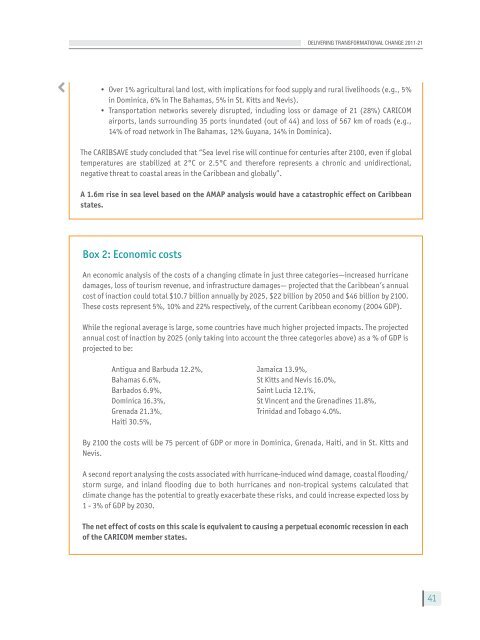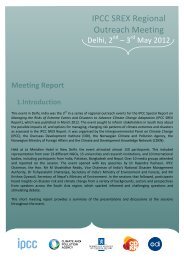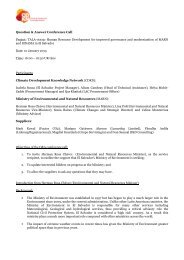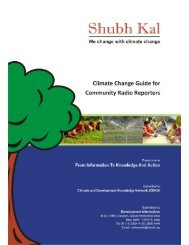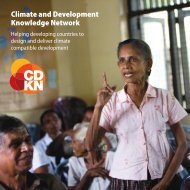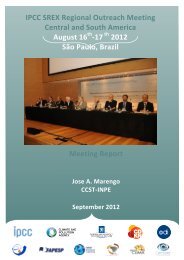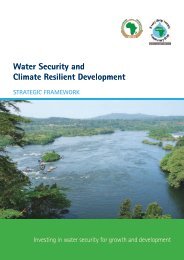Implementation Plan - CDKN Global
Implementation Plan - CDKN Global
Implementation Plan - CDKN Global
- No tags were found...
Create successful ePaper yourself
Turn your PDF publications into a flip-book with our unique Google optimized e-Paper software.
DELIVERING TRANSFORMATIONAL CHANGE 2011-21• Over 1% agricultural land lost, with implications for food supply and rural livelihoods (e.g., 5%in Dominica, 6% in The Bahamas, 5% in St. Kitts and Nevis).• Transportation networks severely disrupted, including loss or damage of 21 (28%) CARICOMairports, lands surrounding 35 ports inundated (out of 44) and loss of 567 km of roads (e.g.,14% of road network in The Bahamas, 12% Guyana, 14% in Dominica).The CARIBSAVE study concluded that “Sea level rise will continue for centuries after 2100, even if globaltemperatures are stabilized at 2°C or 2.5°C and therefore represents a chronic and unidirectional,negative threat to coastal areas in the Caribbean and globally”.A 1.6m rise in sea level based on the AMAP analysis would have a catastrophic effect on Caribbeanstates.Box 2: Economic costsAn economic analysis of the costs of a changing climate in just three categories—increased hurricanedamages, loss of tourism revenue, and infrastructure damages— projected that the Caribbean’s annualcost of inaction could total $10.7 billion annually by 2025, $22 billion by 2050 and $46 billion by 2100.These costs represent 5%, 10% and 22% respectively, of the current Caribbean economy (2004 GDP).While the regional average is large, some countries have much higher projected impacts. The projectedannual cost of inaction by 2025 (only taking into account the three categories above) as a % of GDP isprojected to be:Antigua and Barbuda 12.2%, Jamaica 13.9%,Bahamas 6.6%, St Kitts and Nevis 16.0%,Barbados 6.9%, Saint Lucia 12.1%,Dominica 16.3%, St Vincent and the Grenadines 11.8%,Grenada 21.3%, Trinidad and Tobago 4.0%.Haiti 30.5%,By 2100 the costs will be 75 percent of GDP or more in Dominica, Grenada, Haiti, and in St. Kitts andNevis.A second report analysing the costs associated with hurricane-induced wind damage, coastal flooding/storm surge, and inland flooding due to both hurricanes and non-tropical systems calculated thatclimate change has the potential to greatly exacerbate these risks, and could increase expected loss by1 - 3% of GDP by 2030.The net effect of costs on this scale is equivalent to causing a perpetual economic recession in eachof the CARICOM member states.41


